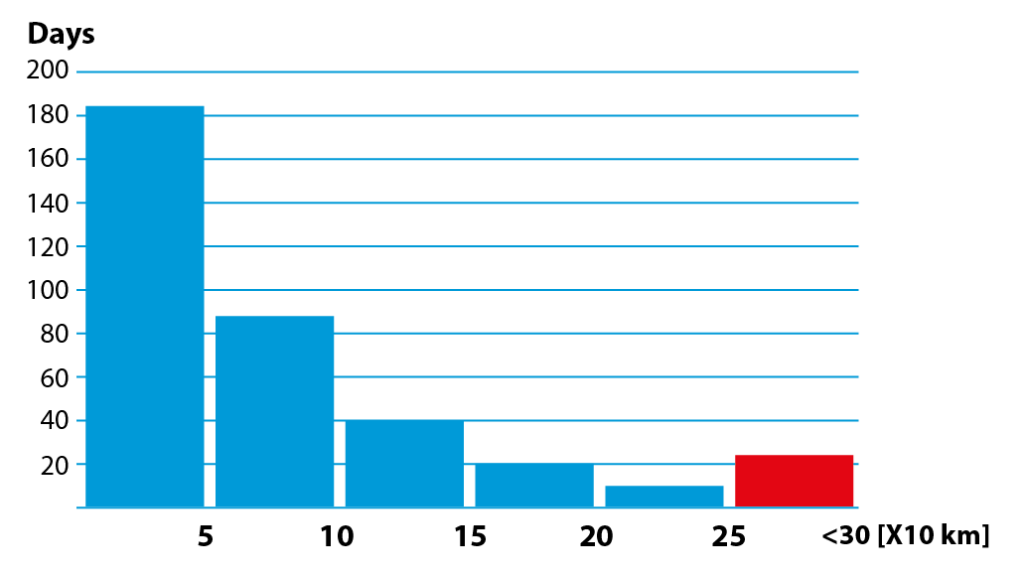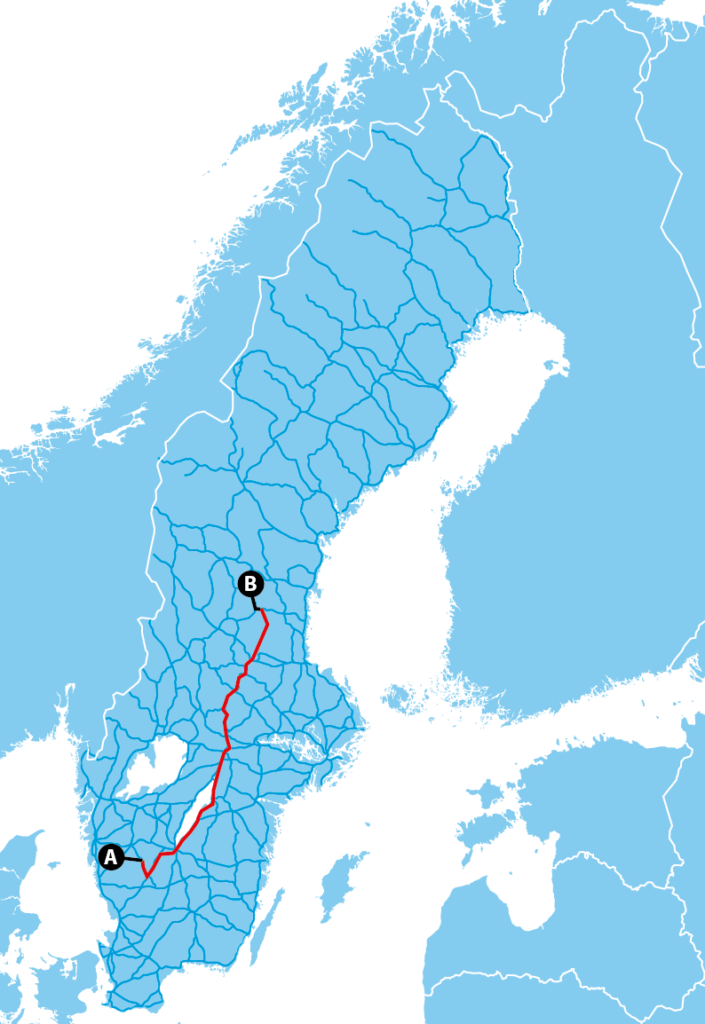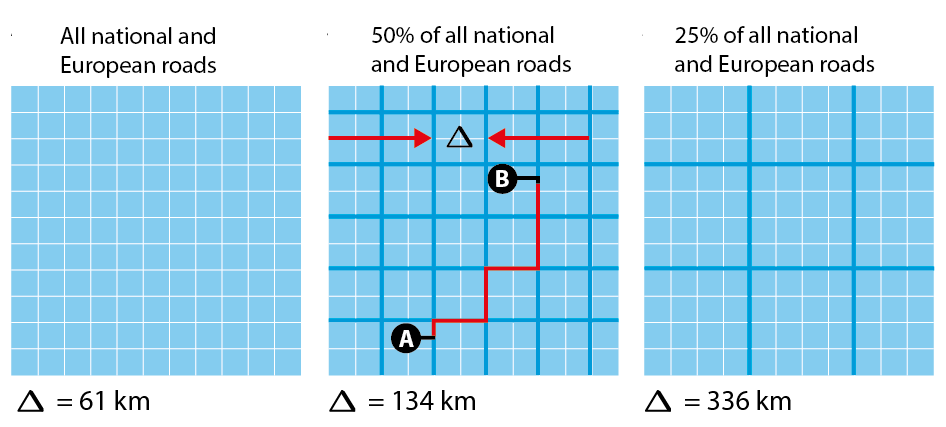Why electric roads when there are charging stations?
With electric roads, much smaller batteries are needed in the vehicles, which is both cheaper and more environmentally friendly. And even with smaller batteries, an electric road system provides “infinite” mileage – you can drive as far as needed without stopping and charging. Without electric roads, there is a need for a large number of fast charging stations with the increasing adoption of electric vehicles.
More and more people are driving electric cars. If all of Sweden’s five million passenger cars were full electric, we would need about 50,000–100,000 stations for fast charging. If charging is to take place at the approximately thousand gas stations available today, it would mean that each gas station would be equipped with at least 50 fast charging poles, which is very difficult to realize. This shows challenges that a fully electrified fleet of vehicles would lead to. (See the full calculation example 1 further down)
For heavy vehicles, such as all-electric trucks, there is a related problem. Trucks used for the distribution of goods in cities can be provided with enough battery capacity for a full day of driving. But heavy trucks with trailers driving longer distances, may need to be charged several times along the way. The question of where all these very powerful fast chargers should be placed remains to be answered.
Electric roads instead?
The following calculation example shows that even with a fairly moderate coverage of electric road systems on the country’s National and European road network, an “infinite” range with an electric vehicle is achieved, even if its battery range is relatively short.
Also trucks and buses achieve the same “infinite” range if they can only run, for example, 200 km on battery.
Simultaneously the overall need for fast charging stations decreases significantly or disappears.
Calculation example 1: Charging stations
Today electric passenger cars, trucks and buses can have quite a long driving range with modern batteries, typically 200-500 km.
It is quite seldom that we drive that far with passenger cars. The chart below shows an example of how many days per year an average driver drives a certain distance per day. The tall bar on the far left shows that, with passenger cars, the average driver drives less than 50 km per day, just over 180 of the days of the year. For many, this stretch is about commuting by car to work. This means that a battery with, for example, a 250 km range (circled in green in the picture) lasts for almost every day of the year if you can charge it every night. It’s the few days that we drive longer (circled in red in the picture) that we need to stop and fast-charge along the road.

If a large part of the population has electric cars, the experience from Norway, for example, shows that it needs a density of fast charging locations of about 1:50–1:100, that is around one fast charger per 50-100 vehicles. As an example, if all of Sweden’s five million passenger cars were fully electric, it would mean that we need about 50,000–100,000 fast chargers placed in convenient locations. As a fast charging typically takes 15-30 minutes, the fast charger should be in a place that allows for instance a restroom visit or to buy food. In Sweden, there are about 1000 gas stations that provide restrooms and food. Assuming that all fast chargers are placed at gas stations, it means that every gas station needs to have 50-100 fast chargers on average. These simple calculations indicate the difficulties that the deployment of fast chargers to a fully electrified fleet of vehicles would lead to.
Calculation example 2: Electric roads instead?

If you imagine that some of all National and European roads (marked with blue in the map above) would be electric roads and if in a country like Sweden you should go from A to B, then you would only need to run on battery to get to and from one of these electric roads (blue route). For the rest part you would manage with energy drawn directly from the electric road (the red route).

To understand this better, we’ve illustrated a thought experiment in the picture above. We turn Sweden into a square that has the same land area as the whole of Sweden. We then cover the square Sweden with electric roads in a grid where the total length of all electric roads is as long as Sweden’s current national and European roads.
Now imagine that you will get from A to B in the picture in square Sweden. Then imagine that a share of Sweden’s national and European roads are electric roads, in the figure either All, 50% or 25% of all National and European routes are electric roads. Then the distance you need to be able to get on battery-only is actually one square. As you can see in the figure, one square is either 61, 134 or 336 km.
This means that your battery range would need to be 61, 134 or 336 km where at least the two first alternatives are shorter in range than most of today’s electric cars are capable of.
This shows that even with fairly moderate coverage (25%–50%) of electric roads on the country’s National and European roads, an “infinite” range with an electric car is achieved, even if its battery range is relatively short.
Also trucks and buses achieve the same “infinite” range if they can only run, for example, 200 km on battery.
At the same time, the need for fast charging stations decreases significantly.
